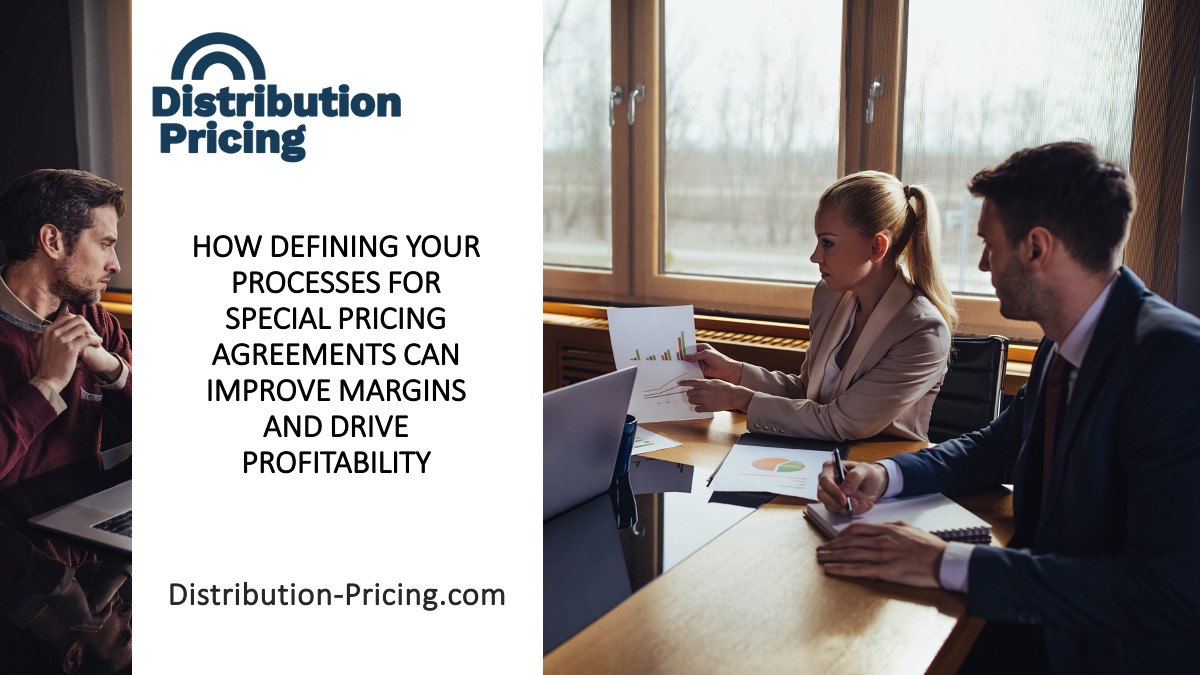Your passion for distribution pricing is what fuels our mission to deliver the most valuable and actionable insights to your inbox.

Can Distributors Reduce Price to Attract Customers?
It seems like basic supply and demand. As price lowers, sales go up along the demand curve. If prices rise, sales drop. Does this hold true for distributors? Can you reduce price to attract new customers? The answer isn’t as straightforward as it may seem. While slashing prices might seem like an easy solution, it’s not always the most effective long-term strategy.
Understanding Price Reduction
Discounting is a familiar tactic when trying to win large jobs in distribution. Various industries offer price reduction to stimulate demand in new locations or with new product lines. A distributor may decide to lower the price of their products or services making them appear to be a more affordable choice. So, on the surface, the main goal is to attract new customers and new purchases by providing buyers with a higher perceived value.
An electrical distributor might decide to offer 15% off any components sold during and industry trade show. Contractors attending the show might want to test the waters with a lower priced product from a new distributor to lower their overall product costs, especially if the components are something they regularly work with. Similarly, a building materials distributor might offer a reduction in bulk purchases during peak building cycles. Builders might be looking to maximize their budget savings at a time when they are using the most materials.
Unfortunately, even though price reductions can be effective in getting new initial purchases from customers, they do not necessarily ensure any level of customer loyalty. Getting a customer in the door is just the first step and keeping them happy so that they return frequently with more purchases is the real challenge. Unless you can ensure high volumes and frequent large orders, reducing price to attract new customers usually results in profit drains.
You also risk creating an expectation with all your customers that another discount is around the corner. You can negatively impact and delay purchasing decisions if customers wait until you have a sale. Perhaps even worse is the impact on your brand in the eyes of your customers. Many buyers perceive that lower cost is somehow associated with lower quality, poorer service, shipment issues, stock issues and more.
It’s more than just the company brand as well. I once heard a buyer relate to a coworker what they felt was the main reason for their cost savings: the sales reps at their supplier lacked confidence.
The Reality of Pricing in Distribution
You may be familiar with the concept of price elasticity. That essentially estimated how sensitive your sales are to changes in price. The tourism industry is exceptionally elastic. People will put off nonessential travel when the cost of flights and accommodations are too high. At the other end of the spectrum are essential grocery expenditures. People buy the staples for their home in similar quantities even as prices go up and down. Anyone who has worked in distribution pricing for any amount of time knows that B2B purchases – especially in bulk or in support of large jobs – are less price elastic for several reasons:
- Businesses need to buy your goods to operate. This is nonnegotiable. If they don’t have supplies, they cannot build houses, fix machinery or install new lighting. This reduces price sensitivity in many areas.
- Many of your customers may have contracts and long-term relationships with you or a competitor. Prices might be locked in around special pricing agreements.
- Businesses working with distributors have larger budgets and a longer view of their spending which makes them less sensitive to price than a consumer buyer.
- Switching costs can be higher in B2B purchasing. Distributors with relationships add more value, understand unique issues and have access to particular stock. This has the effect of reducing the real substitutes available in the market, because while a buyer could find a lower price elsewhere, they may not want to risk missing their own timeline or dealing with shipping problems.
- Some purchases in B2B simply don’t add up to a high enough percentage of the entire scope of a job to make it worthwhile to shop around.
Of course, this doesn’t mean that prices in distribution are elastic at all – if you charge enough, you will lose sales. What it really means is that elasticity in distribution is more complicated than just a price up or down decision and can vary across customer segments, product lines, industries, season and market conditions.
Broadening Your Strategic Choices Beyond Reducing Price
Discounting cannot be the only marketing and negotiation tool in your bag. You must look beyond simple price reductions to win new customers or you risk affecting your profit and brand. Before you jump to reduce your price, consider some slightly more sophisticated approaches.
Bundling
Bundling involves offering more products and services together at a lower combined price than if each item was sold separately. Right away this has an impact on order profitability by increasing the size of the order and potentially increasing overall purchase volume. Buyers feel like they’re getting more for their money, and you will turn more inventory. It also gives you a chance to take advantage of supplier discounts without lower other prices. For example, if you have a 15% discount or rebate on a particular line but can offer a bundle where overall you only give away 5%, you might increase your total profit on the order and still give a deal to the buyer. Overall quantity discounts can have similar effects.
Anchoring
Anchoring is a psychological strategy where standard pricing is higher than what you typically negotiate. This has the effect of creating a reference point in the mind of the buyer – the anchor – that can make a discount seem even more attractive. You should know that this strategy works on your sales reps and counter sales employees as well. In fact, most distribution ERP systems include different cost and sales values for different pricing matrices allowing you to present standard prices to your employees based on your own strategies.
Add Value
Most distributors have created unique value-added services. You might add kitting or special packaging. You might have well-trained customer service or extended warranties. You already know that value-added services can offer a pricing advantage. Additional value allows you to maintain pricing while winning deals. Similarly, you might offer price concessions for tradeoffs. Are you saving on shipping because the customer has their own trucks? Are you doing less service because the customer buys the same goods in large amounts and is familiar with the products? Let the customer know that you are giving them a discount for these reasons – this has the added benefit of creating an anchor for the value of your additional services.
Asking Better Questions in Each Deal
The job of the buyer is to beat up your sales reps over pricing. That level of exposure to price concerns can make the whole organization feel like pricing is all that matters. So, we constantly ask ourselves the same question: can I close this deal faster if I offered a discount. There are better questions to ask.
- Can I preserve profit margins? Reducing prices is the fastest way to eat into profit margins. Most distributors have high fixed costs, so a reduction in price directly impacts profitability. Thinking about bundling or quantity discounts can help you move the profit needle with larger purchases and order profitability which can in turn increase the total revenue from each sales rep.
- Can I increase perceived value? Anchoring and adding value increase your customers’ perception of your value. Even the simplest form of anchoring can help make subsequent discounts seem like better deals. Bundling can sometime result in larger profits overall while making the buyer happy with their discount.
- Can I differentiate in this deal? Bunding and added value also help you differentiate yourself from your competitors. When customers learn that they can get more from your product or service – from bundles, complementary products, training, shipping – they are more likely to return than choose a competitor.
- Is this the right customer? Let’s face it – some customers aren’t’ worth the profit drain. Discounting can attract price-sensitive customers who are ready to jump ship every time a competitor offers a lower price. Let them go. Walk away. This requires some deep analysis of your actual cost structures and real value. Look at our recommended price optimization solutions for the right technology to help. But you don’t want to participate in a race to the bottom.
Editor’s Note: Please read our article, How Distributors Can Drive Profitability with More Effective Discount Management, for a deeper dive on how to follow the data in your discounting strategy.



